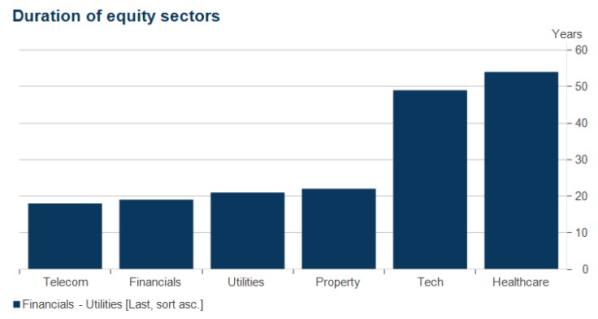Since March 1, China has recorded more than 70,000 locally transmitted COVID-19 cases, mostly caused by the highly contagious Omicron and its sub-variant, with 28 provincial-level regions affected. Epidemiologists said that such a rapid increase in cases in this short timeframe indicates the difficulty of quashing this wave quickly and returning the country to a state of zero-COVID as has been the case with previous waves.
Yet the surge in infections, with few severe cases and only two deaths resulting from underlying conditions but not COVID-19 directly, provides an opportunity for China to explore ways for an exit of the pandemic, said epidemiologists. They believe the experience accumulated during this outbreak will pave the way for China's future exit from the COVID, although there are still gaps to be plugged in the country's response before further easing of current restrictions.
The city of Shenzhen, known as China's “Silicon Valley” in South China's Guangdong Province, the financial hub of Shanghai in eastern China, and the northeastern province of Jilin are the newest hotspots of the coronavirus onslaught. Up to Monday, Shanghai reported more than 20,000 cases. On Sunday, the city announced a two-stage lockdown of the city, with mass testing to be conducted in the two halves, which are separated by the Huangpu River, aiming to stamp out infections.
Shanghai on Tuesday also rolled out a slew of policies, such as giving small businesses subsidies and preferential tax policies. City authorities vowed to maintain safe operation of financial markets to ensure one of the financial drivers of China continues, even amid the COVID-19 restrictions. It also encourages the import of new COVID-19 vaccines and therapeutic drugs, news portal The Paper reported. No more details were provided over what medications or vaccines it is referring to.
Officials from Jilin Province, which has already been sealed off for nearly two weeks, said they have launched the “last siege” of the outbreak on Monday, believing that victory is around the corner. Jilin Province has recorded more than 30,000 cases since March. There were 1,055 confirmed cases reported in Jilin on Monday and 812 asymptomatic cases.
The severe viral spread in Jilin has attracted criticism from residents online over claims of food shortages. Officials from Changchun, a Jilin city, apologized on Tuesday to residents over the difficulties of purchasing food, and vowed that 1,000 tons of food will be delivered to Changchun per day to relieve the situation.
Shenzhen has rebounded quickly from the latest outbreak, with strict measures in place. The tech hub announced the resumption of normal life and work on Sunday after “hitting the pause button” to stem the spread of the COVID-19 for one week.
“It is unlikely that China will welcome a period, where there are zero cases for a long time, like it used to be… but in certain places where infections have surfaced and been spotted promptly, clearing all cases is still achievable at early stages of an outbreak,” an expert from the Chinese Center for Disease Control and Prevention (China CDC), who requested anonymity, told the Global Times, attributing the new reality to the highly contagious variant and widespread sporadic infections within the country.
He noted that in the near future, cities will strive to maintain a low level of infections, which will not crash their medical systems, and try to prevent severe cases or deaths caused by COVID-19.
Zeng Guang, former chief epidemiologist of the Chinese CDC said China is now in a “tough battle” against the coronavirus when cases are piling up. “But fortunately we don't yet have deaths directly caused by the virus in the new flare-up,” said Zeng, noting that when upholding the principle of dynamic zero-COVID, it is time for the country to explore ways to cope with large-scale outbreaks.
Shanghai, which is proud of its previous “precise” handling of COVID-19 changed course on Sunday night with a sudden decision to implement a two-stage lockdown and mass testing of the metropolis which has a population of some 24 million. Experts pointed out the city's previous handling has met with some obstacles recently, such as online complaints of difficulties in getting food. A nurse suffering an asthma attack died last week after being refused access to emergency rooms closed for disinfection under COVID-19 restrictions.
An article by Zhang Zuofeng, professor of epidemiology and associate dean of research with the School of Public Health at the University of California has been widely circulated on Chinese social media in recent days. Zhang advised to further tweak China's COVID-19 playbook, including allowing home quarantine for patients with mild symptoms and avoiding mandatory isolation and mass testing.
The anonymous CDC expert said he held discussions with Shanghai health experts on home quarantine when the city's medical system felt the brunt of the surging cases recently, yet he brushed aside the possibility. Home quarantine is only a choice by necessity when medical and isolation facilities are exhausted, he said, explaining that only by rounding up all positive cases can society clear all cases quickly.
“Self-isolation will further propagate infection, and it is difficult to manage on social level,” he said.
Home quarantine is a policy adopted by many countries on their way of relaxing COVID-19 controls. For example, when most infected cases reported no or mild symptoms, Singapore announced in September 2021 to expand their Home Recovery scheme, to allow more infected individuals to self-isolate, and take the necessary health precautions at home, with telehealth monitoring support.
Echoing the anonymous expert, Zeng also believes it is premature for China to allow self-quarantining of people who have mild symptoms. “Many countries already built up immunity [among populations] as their infection rates were very high. We have to see if society can tolerate such relaxation of COVID-19 policies.”
Zhang's article sparked heated debate online, and met with certain opposition. One Sina Weibo user noted that “I disagree with self-quarantine because one case may trigger aerosol infection and affect the whole building.”



